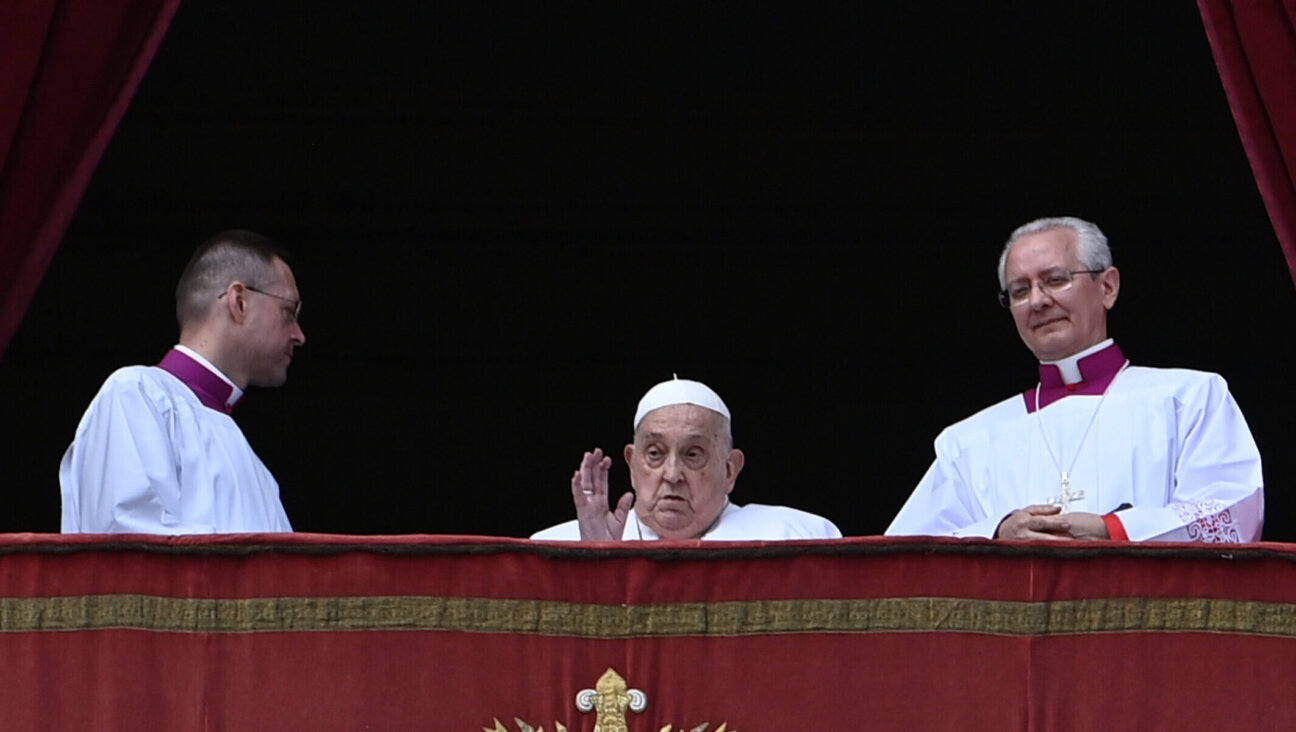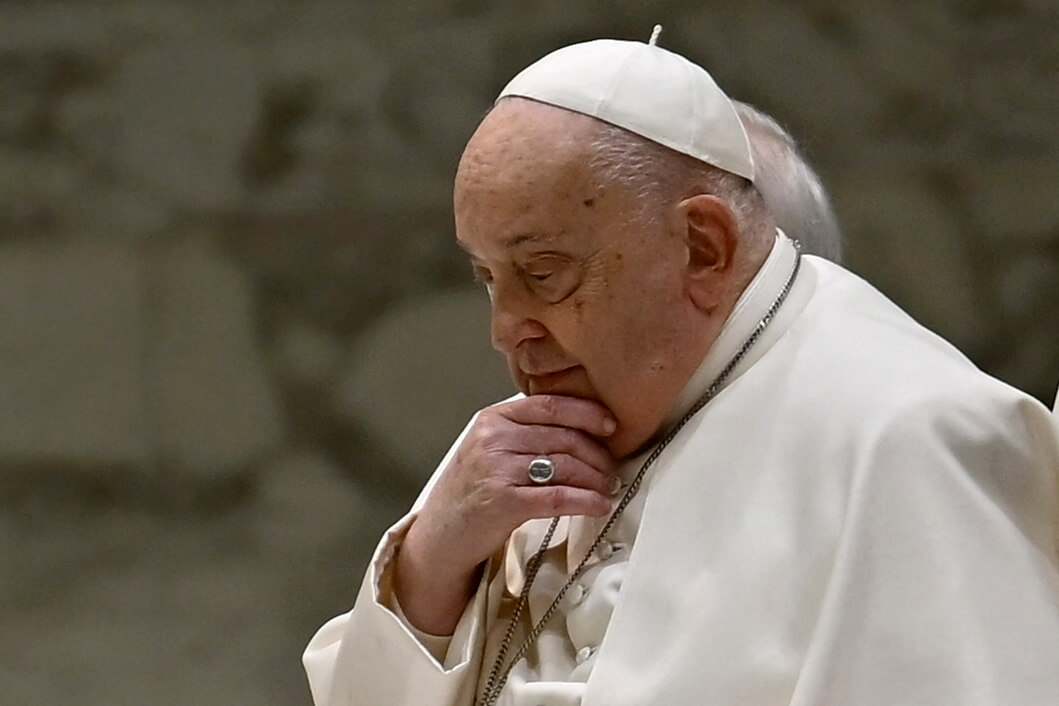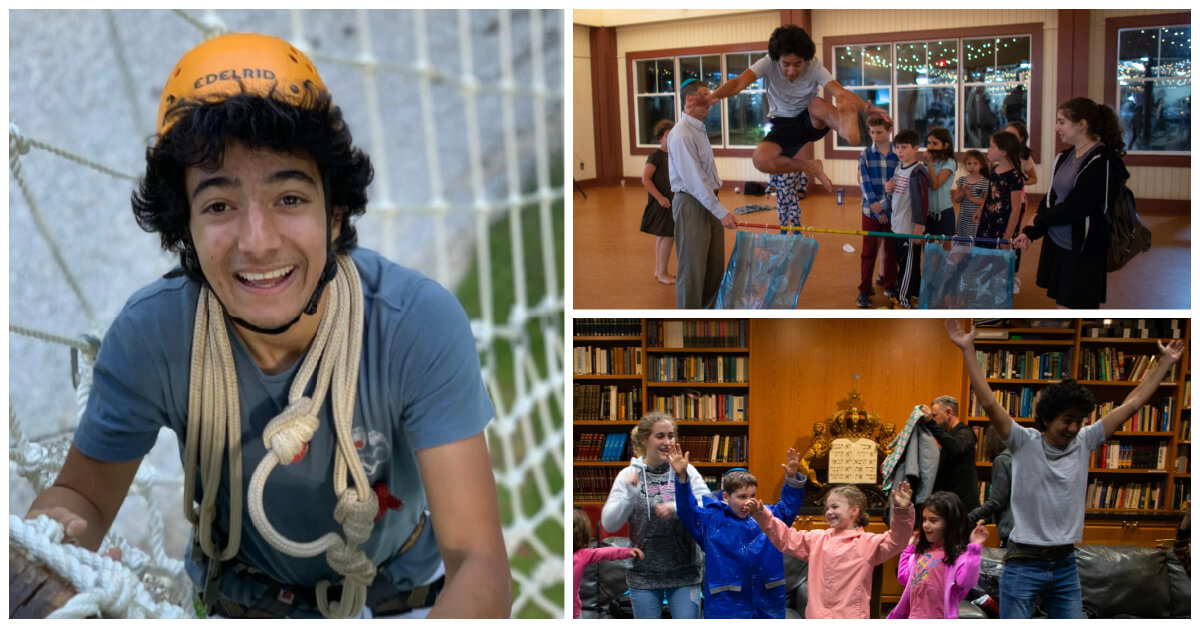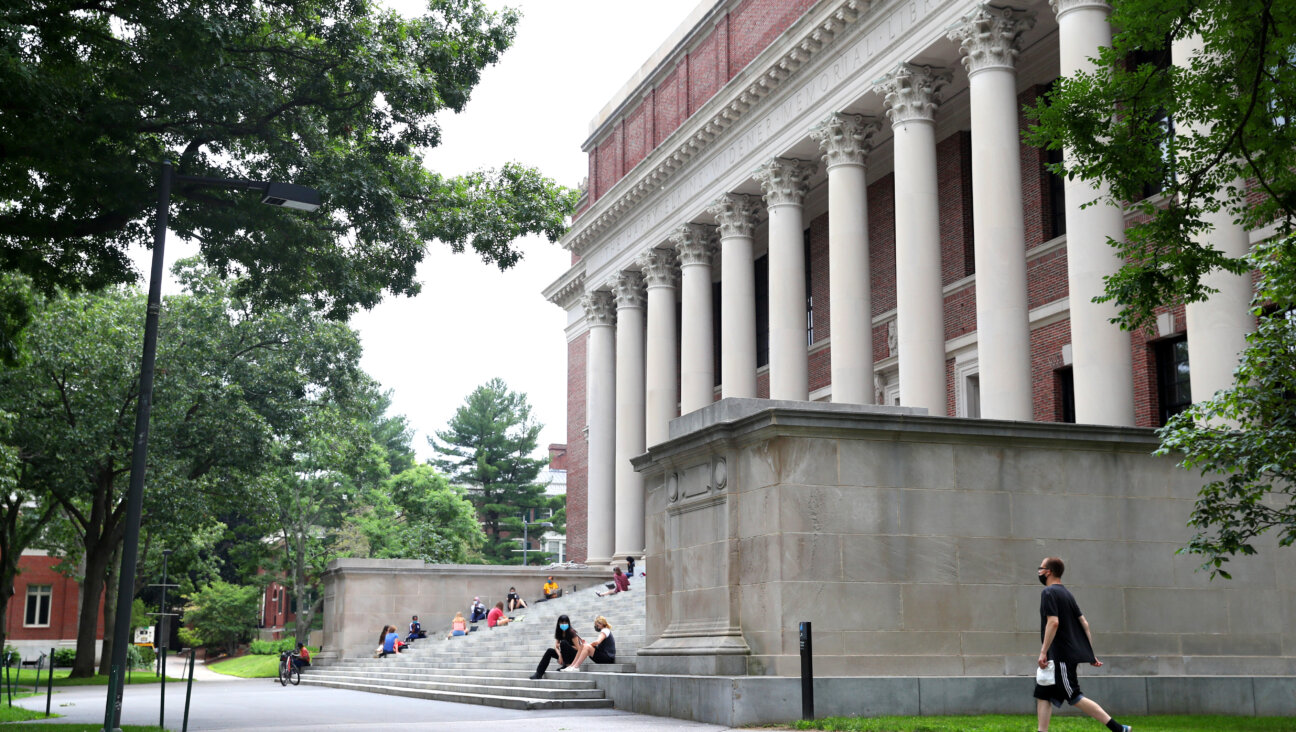Book Banned by Ultra-Orthodox Brings ‘Torah Personality’ To Life
This path-breaking work, the product of 15 years of painstaking research, brings to pulsating life the world of pre-war “Lithuanian,” or non-chasidic, Orthodoxy, in particular its yeshivas, which have come to serve as educational models for contemporary Orthodoxy in the United States, Israel and elsewhere around the world.
Yet the book has been banned by certain influential charedi, or ultra-Orthodox, circles, making it difficult to obtain. These bans, signed by leading yeshiva heads, have been publicized in charedi newspapers and on wall posters; the volume has been publicly burnt in the famed yeshiva of Lakewood, N.J., and one Brooklyn rabbi has gone so far as to suggest that buying a crucifix is preferable to buying this book.
In the past year, two similar instances of intolerance have issued from the same quarter. In the first, these rabbis refused to allow Orthodox Rabbi Yosef Reinman to join Reform Rabbi Ammiel Hirsch on a book tour to promote their book, “One People, Two Worlds: A Reform Rabbi and an Orthodox Rabbi Explore the Issues That Divide Them” (Schocken, 2002). In the second, charedi authorities in England insisted that Jonathan Sacks, chief rabbi of Britain, edit out of his book “The Dignity of Difference: How to Avoid the Clash of Civilizations” (Continuum, 2002) suggestions that religions other than Judaism have elements of truth.
But while the objections to these earlier works were rooted in an aversion to any hint of religious pluralism, the complaints about “Making of a Godol” reflect charedi fears of divulging facts about their own history. These fears are understandable: the book is devoid of the apologetics, defensiveness and ideological bent that characterize other works on similar topics by charedi writers.
Their case for suppressing the book is complicated by the fact that the author himself is charedi. Rabbi Nathan Kamenetsky, educated in yeshivas and subsequently a teacher in them, describes himself as an “autodidact in secular knowledge.” The focus of his research is the life of his father, Rabbi Yakov Kamenetsky, who attended the famed yeshiva in Slobodka — a suburb of Kovno, Lithuania — during its glory years during the first quarter of the 20th century. Following World War II, he served as Talmud professor and dean at the Torah Vodaath Rabbinical Seminary in New York City, until his retirement in 1968. He died in 1986 at the age of 95. The elder Kamenetsky was a member of the Moetzes Gedolei HaTorah (Council of Torah Sages) of Agudath Israel, and hence the book’s title signifies “the making of a sage.”
In this first of what is intended to be many volumes, the author uses the biography of his father through the spring of 1908, when Yakov Kamenetsky returned home from Slobodka for Passover vacation, as what he calls “a platform” to present a dazzling panorama of the “yeshiva world” from its origins in early 19th-century Volozhin. It is based on an impressive array of written sources emanating both from the yeshiva world and from academia, old newspapers and magazines, his father’s taped reminiscences, and an astounding 357 interviews (the interviewees are listed in the bibliography).
Be forewarned: The book is eccentrically arranged and difficult to read. What is called “The Text” is only 66 pages long and is followed by some 1,200 additional pages. On the top of each of these pages a section of that original text is reprinted, and underneath are found elucidating “Notes and Excurses,” many of them pages long. Much like a talmudic discussion, these are often only tangentially related to the text and follow no chronological order, necessitating a “chronology of excurses” at the end of the book. But “Making of a Godol” is fascinating reading nonetheless.
The book should destroy, once and for all, any lingering idyllic notion that pre-war Eastern European Jewry lived a religiously untroubled existence. Already at the turn of the 20th century the world of Jewish tradition was dissolving, as many Jews jettisoned ritual observances. We learn that Yakov Kamenetsky and a number of his fellow students at the yeshiva were the sole members of their families to retain Orthodox ties, and that even children of the most pious and learned among the rabbinical elite — the author names several of them — left the fold.
The proximate cause of these defections was the reading of secular books, a pastime frowned upon by Orthodox tradition. Such reading was widespread even among those young yeshiva boys who, in the end, stayed Orthodox and became leading rabbis. Yakov Kamenetsky himself, for example, achieved the equivalent of a high-school diploma through private tutoring, and his classmate, the future charismatic leader of American Orthodoxy Rabbi Aaron Kotler, loved Russian literature, especially the works of Alexander Pushkin.
The exposure that generation of yeshiva students had to the broader world of ideas helps explain the puzzling fact that those European-educated rabbis who taught in American yeshivas in the three decades after World War II were for the most part more open to secular knowledge (Kotler being the exception) than their American-born counterparts, who tended to justify college attendance only for the purpose of making a living. There is, indeed, a wonderful vignette of Rabbi Kamenetsky, in later years, mentioning “Anna Karenina” to his uncomprehending Torah Vodaath students in New York and expressing shock that they never heard of Leo Tolstoy’s masterpiece.
The bitter ideological divisions within the late-19th- and early-20th-century Jewish community found expression even within the walls of the yeshivas, institutions that we are accustomed to viewing as havens in the storm. Many of the students were secret or open revolutionaries, dedicated to overthrowing the czarist Russian regime that then ruled Lithuania. They sporadically carried out violent demonstrations against the yeshiva administrations, which they saw as collaborating with the government. The dean of the famous yeshiva in Telz, in fact, closed down his school for two months during 1905 so as to rid himself of such troublemakers and repopulate the yeshiva with more politically reliable young men.
The internal conflict that receives the most attention in this book, however, will seem far more esoteric to those unfamiliar with the arcana of Orthodoxy, specifically the great struggle over Musar (ethical teachings). In the mid-19th century, Rabbi Yisrael Salanter, one of the most original thinkers in the history of Lithuanian Jewry, criticized his community for neglecting the serious study of ethical texts. By concentrating on intellectual analysis and punctilious performance of the ritual, Salanter felt, Jews had lost the sense of closeness to God, leaving their young people vulnerable to the pull of secular movements. Salanter advocated studying Jewish ethical literature in an atmosphere of spiritual arousal, so that proper conduct toward one’s fellow man might regain what he considered its original importance within Judaism.
After Salanter’s death in 1883, the question of whether Musar should become part of the yeshiva curriculum led to disputes, with many of the rabbis considering such study bitul Torah, a waste of time that could better be spent studying the Talmud, and warning that too much moral introspection was psychologically unhealthy. The pro- and anti-Musar forces sometimes came to blows, and some yeshivas split into two over the issue. In Slobodka, we learn, there were actually two yeshivas; one, Kneseth Yisrael, where Kamenetsky studied, emphasized Musar, and the other, Kneseth Yitzchak, did not.
The book presents a fascinating picture of Rabbi Noson Zvi Finkel, known as the “Alter” (old man), the chief Musar instructor at Kneseth Yisrael. This complex man was, on the surface, a gentle, nurturing father figure who inspired scores of students, but he was at the same time a controlling personality who carefully monitored the personal lives of his charges, even having their mail opened and read if he suspected that they were receiving letters from ideologically suspect correspondents.
Author Nathan Kamenetsky’s foreword demonstrates that he fully expected charedi criticism of this book. He acknowledges the existence of a school of thought within Orthodox circles that denies the importance of factual history, preferring the production of “stories” of the past that teach edifying religious lessons. He quotes one rabbinic advocate of this approach as saying, “We do not need realism: we need inspiration from our forefathers.” But Kamenetsky has gone a different route, following the dictum of another rabbi who said, “You cannot educate through lies.” In doing so, Kamenetsky has charted a new and exciting path in Orthodox historiography.
Lawrence Grossman is co-editor of the American Jewish Year Book 2002. He last appeared in these pages February 7 reviewing Iain Pear’s novel “The Dream of Scipio” (Riverhead).
The Forward is free to read, but it isn’t free to produce

I hope you appreciated this article. Before you go, I’d like to ask you to please support the Forward.
Now more than ever, American Jews need independent news they can trust, with reporting driven by truth, not ideology. We serve you, not any ideological agenda.
At a time when other newsrooms are closing or cutting back, the Forward has removed its paywall and invested additional resources to report on the ground from Israel and around the U.S. on the impact of the war, rising antisemitism and polarized discourse.
This is a great time to support independent Jewish journalism you rely on. Make a Passover gift today!
— Rachel Fishman Feddersen, Publisher and CEO
Make a Passover Gift Today!
Most Popular
- 1

News Student protesters being deported are not ‘martyrs and heroes,’ says former antisemitism envoy
- 2

News Who is Alan Garber, the Jewish Harvard president who stood up to Trump over antisemitism?
- 3

Fast Forward Suspected arsonist intended to beat Gov. Josh Shapiro with a sledgehammer, investigators say
- 4

Opinion What Jewish university presidents say: Trump is exploiting campus antisemitism, not fighting it
In Case You Missed It
-

Fast Forward Pope Francis’ final speech called for ceasefire and hostage release in Gaza war
-

Opinion Shackled, imprisoned and subjected to false accusations, Kilmar Abrego Garcia recalls the fate of Captain Alfred Dreyfus
-

Opinion The dangerous Nazi legend behind Trump’s ruthless grab for power
-

Culture In Pope Francis, a voice for interfaith dialogue and against antisemitism
-
Shop the Forward Store
100% of profits support our journalism
Republish This Story
Please read before republishing
We’re happy to make this story available to republish for free, unless it originated with JTA, Haaretz or another publication (as indicated on the article) and as long as you follow our guidelines.
You must comply with the following:
- Credit the Forward
- Retain our pixel
- Preserve our canonical link in Google search
- Add a noindex tag in Google search
See our full guidelines for more information, and this guide for detail about canonical URLs.
To republish, copy the HTML by clicking on the yellow button to the right; it includes our tracking pixel, all paragraph styles and hyperlinks, the author byline and credit to the Forward. It does not include images; to avoid copyright violations, you must add them manually, following our guidelines. Please email us at [email protected], subject line “republish,” with any questions or to let us know what stories you’re picking up.













